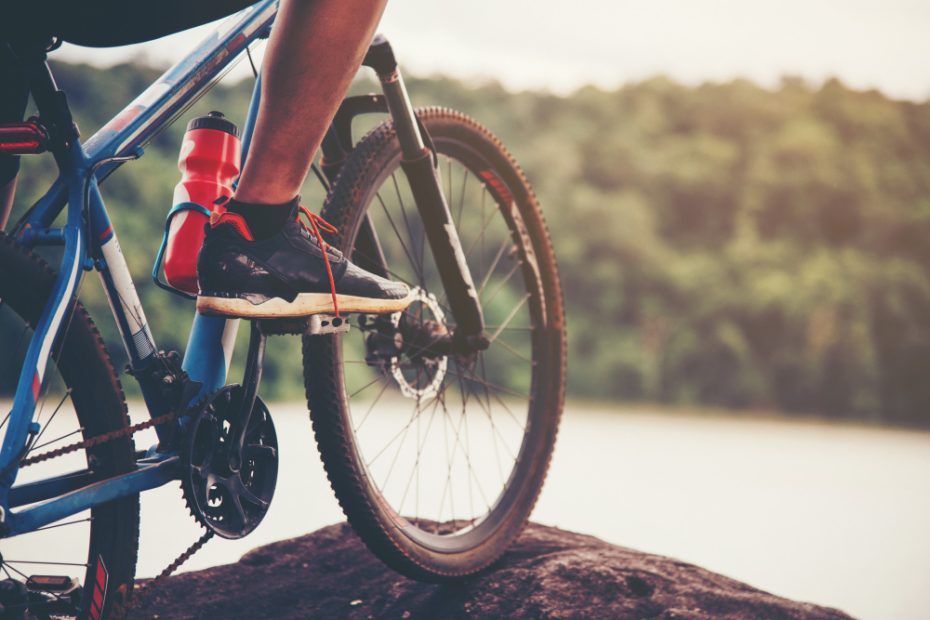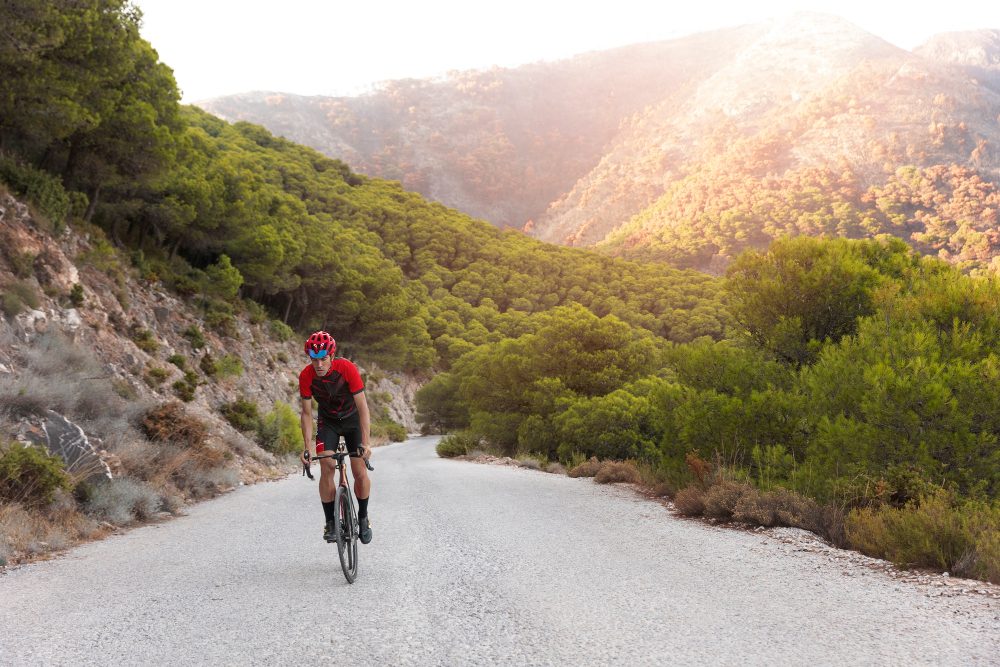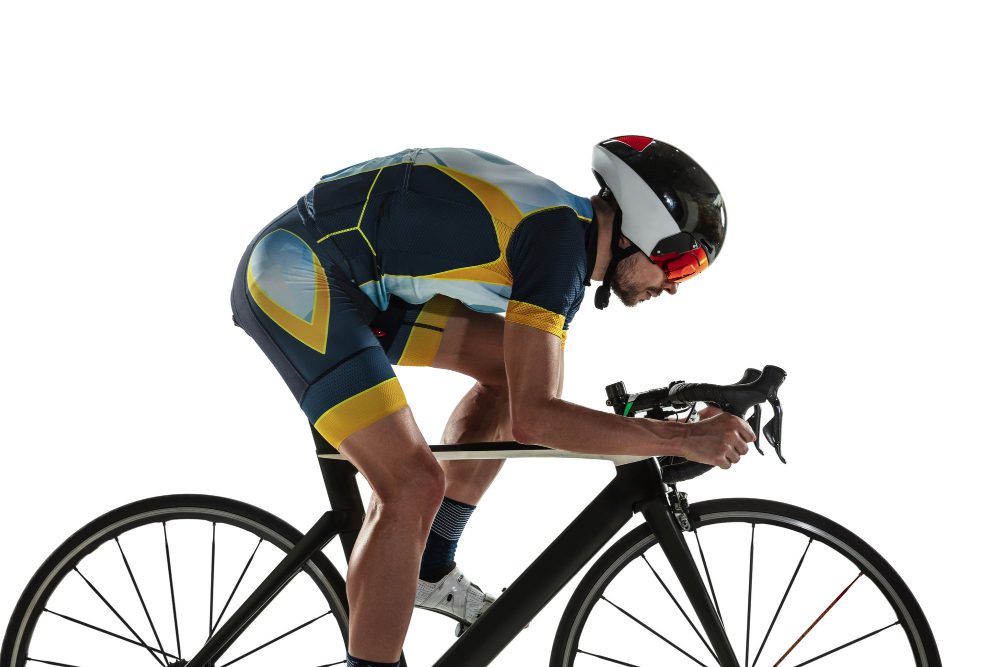Will cycling give me a nice bum?
Many people wonder if cycling can help them achieve a more toned and shapely backside. The short answer is yes, cycling can indeed contribute to having a nice bum. However, it’s important to understand that simply hopping on a bike won’t magically transform your behind overnight. Like any exercise, cycling requires consistency, proper technique, and a well-rounded fitness routine to truly see results.
How does cycling benefit the glutes?
Cycling primarily engages the gluteal muscles, which are responsible for giving your bum its shape and strength. When you pedal, these muscles work to extend your hips and knees. This repetitive motion helps to tone and strengthen the glutes over time, leading to a firmer and more lifted backside.
In addition to toning your glutes, cycling offers several other benefits for your overall fitness:
- Cardiovascular health: Cycling is a great cardiovascular exercise that gets your heart rate up, improving your cardiovascular fitness and helping to prevent heart diseases.
- Weight management: Regular cycling can aid in weight loss or maintenance, as it burns calories and helps to build lean muscle mass.
- Joint-friendly: Cycling is a low-impact exercise, meaning it puts less stress on your joints compared to activities like running. It’s a suitable option for individuals with joint issues or those looking for a lower-impact workout.
- Improved mental well-being: Engaging in regular physical activity, such as cycling, has been shown to boost mood, reduce stress, and improve overall mental health.
Maximizing your bum-toning potential
While cycling alone can contribute to a nicer bum, combining it with other exercises and healthy lifestyle choices can maximize your results. Here are some tips to help you get the most out of your cycling routine:
1. Vary your cycling intensity
Cycling at a steady pace is beneficial, but incorporating intervals or uphill climbs can further challenge your glutes. As you become more comfortable on the bike, try including sprints or adding resistance to your rides to engage your muscles even more.
2. Incorporate strength training
Strength training exercises targeting your glutes can complement your cycling routine and enhance your bum-toning efforts. Some effective exercises include:
- Squats
- Lunges
- Glute bridges
- Deadlifts
By combining cycling with these exercises, you’ll be working your glutes from different angles and maximizing their potential for growth and toning.
3. Maintain a balanced diet
Eating a balanced diet that includes sufficient protein can support muscle growth and repair, which is essential for achieving a nice bum. Ensure you’re getting enough protein, along with a variety of fruits, vegetables, whole grains, and healthy fats to fuel your body optimally.
In conclusion
Cycling can indeed contribute to having a nice bum by toning and strengthening the gluteal muscles. By incorporating cycling into your fitness routine, varying your intensity, adding strength training exercises, and maintaining a balanced diet, you can maximize your bum-toning potential. Remember, consistency is key, and results will come over time with dedication and perseverance. So hop on your bike, enjoy the ride, and reap the benefits for your backside and overall health!
Does cycling build abs?
When it comes to building abs, cycling can be a great form of exercise. While it primarily targets the lower body, cycling also engages the core muscles, including the abs. The repetitive motion of pedaling helps strengthen and tone the abdominal muscles over time.
Cycling engages multiple muscle groups at once, including the abs, glutes, and quadriceps. As you cycle, your abs work to stabilize your body and maintain balance. This constant engagement can help develop stronger and more defined abs.
However, it’s important to note that cycling alone may not be enough to build visible abs. To see noticeable results, it’s essential to combine regular cycling with a balanced diet and a comprehensive strength training routine that specifically targets the abs.
If you’re looking to maximize your ab workout while cycling, you can incorporate additional exercises into your routine. For example, try standing up during hill climbs or sprints to engage your core muscles even more. You can also perform planks or crunches before or after your cycling session to further strengthen your abs.
The Benefits of Cycling for Abs:
- Improved core strength: Cycling helps strengthen the deep core muscles, leading to better stability and balance.
- Toned abs: Regular cycling can help tone and define the abdominal muscles.
- Calorie burning: Cycling is a great cardiovascular exercise that can aid in overall fat loss, contributing to a more visible six-pack.
“Cycling is not only a fun way to exercise, but it also provides numerous benefits for your abs and core muscles.” – Fitness Expert
In addition to the physical benefits, cycling offers mental health benefits as well. Regular cycling can reduce stress and improve overall mood, helping you maintain a positive mindset towards your fitness goals.
While cycling can contribute to building abs, it’s important to have realistic expectations. Genetics, body fat percentage, and overall diet also play significant roles in achieving visible abs. Incorporating cycling into your fitness routine along with proper nutrition and targeted ab exercises will give you the best chance of developing strong and defined abs.
Why do my glutes hurt when cycling?
1. Introduction
Cycling is a popular form of exercise that can provide many benefits, including cardiovascular fitness and toned leg muscles. However, it is not uncommon for cyclists to experience discomfort or pain in their glutes during or after a ride.
2. Muscle Fatigue
One reason why your glutes may hurt when cycling is due to muscle fatigue. While cycling primarily targets the leg muscles, the glutes are also engaged throughout the pedaling motion. When your glutes are not accustomed to prolonged or intense cycling, they can become fatigued, leading to soreness or discomfort.
3. Incorrect Bike Fit
Another possible cause of glute pain while cycling is an incorrect bike fit. If your bike is not properly adjusted to your body measurements, it can put additional strain on your glutes. A saddle that is too high or tilted forward can lead to excessive pressure on the gluteal muscles, causing pain or discomfort.
4. Weak Gluteal Muscles
Weak gluteal muscles can contribute to discomfort or pain during cycling. If your glutes are not adequately strengthened, they may struggle to support the repetitive motion and resistance involved in cycling. Regular strength training exercises targeting the glutes can help alleviate this issue.
5. Overuse or Strain
Cycling excessively or pushing yourself too hard can lead to overuse or strain on the gluteal muscles. This can result in muscle soreness, inflammation, or even injuries such as strains. It is important to gradually increase your cycling intensity and duration to allow your glutes to adapt and avoid overloading them.
6. Solutions and Prevention
To prevent or alleviate glute pain during cycling, there are a few steps you can take:
- Ensure your bike is properly fitted to your body measurements.
- Incorporate glute-strengthening exercises into your fitness routine.
- Gradually increase your cycling intensity and duration.
- Take breaks and rest when needed to allow your glutes to recover.
7. Quotes
“Proper bike fit and appropriate muscle conditioning are key factors in preventing glute pain during cycling.” – Cycling expert
8. Conclusion
Glute pain during cycling is a common issue that can be caused by various factors such as muscle fatigue, incorrect bike fit, weak gluteal muscles, or overuse. By addressing these factors and taking preventive measures, you can enjoy a comfortable and pain-free cycling experience while working towards a toned and strong bum!
9. Additional Resources
For further information on cycling techniques, bike fit, and glute-strengthening exercises, you may find the following resources helpful:
- BikeRadar – Essential Guide to Cycling Exercises
- Cycling Weekly – Saddle Fitting Tips
- Bicycling – Best Exercises for Cyclists
10. Disclaimer
This article is for informational purposes only and should not be considered as medical or professional advice. If you are experiencing persistent or severe gluteal pain while cycling, it is recommended to consult with a healthcare professional or a certified cycling coach.



